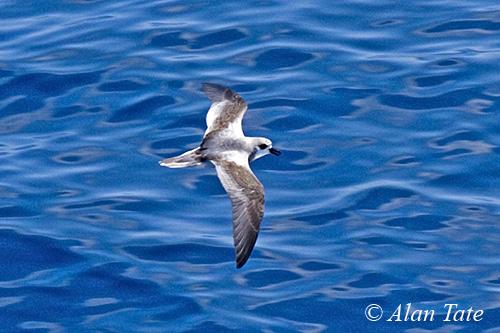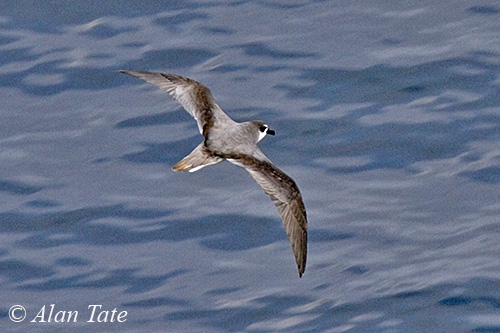
Fr: Pétrel de De Filippi
Ang: Masatierra Petrel - De Filippi's Petrel
All: Juan-Fernández-Sturmvogel
Esp: Petrel Chileno
Ita: Petrello di Defilippe
Nd: Juan-Fernándezstormvogel
Sd: robinsoncrusoepetrell
Photographers:
Alan & Ann Tate
AA Bird Photography
Text by Nicole Bouglouan
Sources:
HANDBOOK OF THE BIRDS OF THE WORLD vol 1 by Josep del Hoyo-Andrew Elliot-Jordi Sargatal - Lynx Edicions - ISBN: 8487334105
Petrels, Albatrosses, and Storm-Petrels of North America: A Photographic Guide De Steve N. G. Howell – Editor: Princeton University Press, 2012 – ISBN: 0691142114, 9780691142111 – 482pages
OISEAUX DE MER – Guide d’identification de Peter Harrison – Editions Broquet (Canada) – ISBN-10 : 2890004090 – ISBN-13 : 978-2890004092
BIRDS OF PERU by Thomas S. Schulenberg, Douglas F. Stotz, Daniel F. Lane, John P. O’Neill, Theodore A. Parker III – Princeton University Press 2007 – ISBN: 978-0-691-13023-1
Birds of Peru by Clive Byers – Editor: Bloomsbury Publishing, 2016 – ISBN: 147293217X, 9781472932174 – 144 pages
Field Guide to the Birds of Chile by Daniel E. Martínez Pina, Gonzalo E. González Cifuentes – Editor: Bloomsbury Publishing, 2021 – ISBN: 1472987934, 9781472987938 – 224 pages
A Wildlife Guide to Chile: Continental Chile, Chilean Antarctica, Easter Island, Juan Fernández Archipelago by Sharon Chester – Editor: Princeton University Press, 2010 – ISBN: 1400831504, 9781400831500 – 400 pages
Humboldt Current seabirding in Chile
Identification at sea of Cook's, de Filippi's, and Pycroft's Petrels
Wikipedia, the free encyclopaedia
Page family Procellariidae
Summary cards
Masatierra Petrel or De Filippi's Petrel
Pterodroma defilippiana
Procellariiformes Order - Procellariidae Family
INTRODUCTION:
The Masatierra Petrel or De Filippi's Petrel is endemic to Chile, but it usually nests in the Juan Fernández Islands and Desventuradas Islands, off Chile. It spends most of the year at sea oceanic waters.
This species breeds in colonies on isolated islands, on open ground, but also among shrubs, on cliff ledges, in rock crevices and boulders, at foot of lava cliffs. It is probably monogamous and both adults share the nesting duties.
The diet includes small squid and small fish caught by skimming at sea surface.
The Masatierra Petrel or De Filippi's Petrel is affected by predation by mammalian species on the breeding islands, but the impact on the birds is unknown.
The small population is suspected to be stable but the breeding range is restricted. The species is currently classified as Vulnerable.

DESCRIPTION OF THE BIRD:
Biometrics:
Length: 26-29 cm
Wingspan: 66 cm
Weight: 143-175 g
The Masatierra Petrel has mostly grey plumage on the upperparts, with a distinctive dark M across the upperwing extending to the rump. This pattern is darker grey or dark slate-grey. A broad, partial, dark grey collar extends from the mantle onto the sides of neck and breast. The uppertail is grey with partially white outer rectrices.
The underparts are white. On the white underwing, the dark grey tips of the flight-feathers form a narrow, dark trailing edge. The leading edge on carpal is blackish-grey with some white areas, but we can see a blackish crescent on the carpal angle, extending in a faint dark diagonal bar onto the central wing.
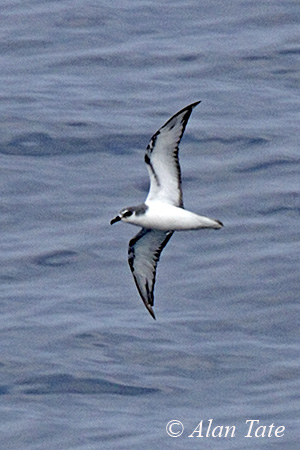
On the head, the forehead is white with dark grey bases to feathers forming some dark spots. Both foreface and fore superciliary are white, whereas crown to upper ear-coverts is mostly grey, becoming blackish around the eye. Chin and throat are white, but the nape is grey.
The stout bill is black. The eyes are dark brown. Legs and webbed feet are mostly greyish-pink, but blacker on the outer toes.
Male and female are similar.
The juvenile resembles adults.
The Masatierra Petrel is very similar to Cook's Petrel, Stejneger's Petrel and Juan Fernandez Petrel.
It differs from Cook's Petrel and Stejneger's Petrel by the lack of the black tail tip, a stouter bill and a darker eye patch.
The Masatierra Petrel was formerly a subspecies of the Cook's Petrel.
On the other hand, the Juan Fernandez Petrel has darker nape and tail, and long, thin wings.
RANGE:
The Masatierra Petrel spends most of the year at sea in E Pacific Ocean, S of the Equator. It usually frequents the area where the Humboldt Current causes a major upwelling of nutrient-rich cold water.
The species breeds on the Juan Fernández Islands and Desventuradas Islands, approximately 900 km away from each other.
It also breeds in Chile, and it is a pelagic visitor to the Chilean coast from Atacama to Biobío.
HABITAT:
The Masatierra Petrel is highly pelagic and mostly found in oceanic waters. It is usually common offshore, about 300 km off the coasts where the temperatures often exceed 15°C at sea-surface.
It breeds in colonies established on isolated volcanic islands with little vegetation. The Masatierra Petrel nests in different conditions compared to other gadfly petrels. It may nest on open ground but also under shrubs or in small caves, usually between 15 and 450 metres above the sea-level.
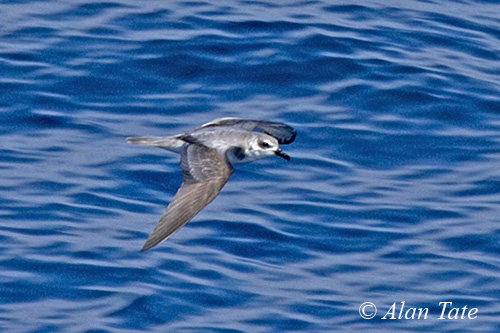
CALLS AND SONGS: SOUNDS BY XENO-CANTO
The Masatierra Petrel is noisy at the colonies, but it is silent at sea. At the colonies, it produces a “purring” call when some noise is heard close to the nest entrance. More information is needed.
BEHAVIOUR IN THE WILD:
The Masatierra Petrel feeds on small squid, small fish, crustaceans and carrion.
It feeds by skimming across the sea-surface, and scooping up prey on the wing. It may occasionally forage in small groups of 2-3 birds, and sometimes up to 6 individuals.
This species breeds on cliffs on remote islands where the colonies are established. Like other Pterodroma species, the Masatierra Petrel is probably monogamous.
Unlike other gadfly petrels, it visits the colonies at daytime and the courtship displays are also performed during the day.
Information is needed about the migratory behaviour, but apparently, this species does not move far away and only throughout the Humboldt Current.
These petrels have a dynamic and highly efficient flight related to their offshore habitat. They fly with a high wheeling action in windy conditions.
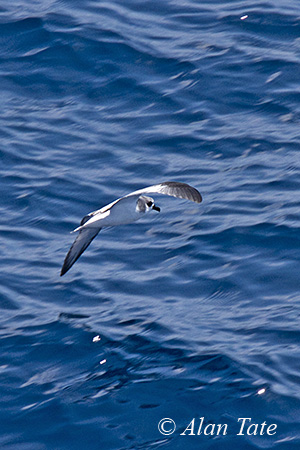
REPRODUCTION OF THIS SPECIES:
The laying apparently occurs between July and August on Desventuradas Islands. The chicks hatch in October and fledge in March.
In Juan Fernández Islands, the breeding period starts 4-8 weeks later, in August-September in San Ambrosio.
The Masatierra Petrel breeds on sheltered cliff ledges, rock crevices, small caves, among boulders and under shrubs on cliffs, between 15 and 450 metres above sea-level.
It builds an open nest, sometimes lined with sticks and feathers. However, some of them may also nest directly on rocks or sand, protected by some vegetation.
The female lays a single white egg, as usual in tubenoses. Both parents share the nesting duties including chick rearing and changes in incubation bouts. They are active at daytime.
The colonies are abandoned in December-January.
PROTECTION / THREATS / STATUS:
Most breeding populations of Masatierra Petrel are on predator-free islands, but cats, coati and rats seem to be still present on Robinson Crusoe, whereas cats involve extensive mortality on San Felix.
Rats and goats are present on several islands, but the impact on the species is unknown.
The population is suspected to be stable, but the breeding range is restricted and susceptible to be threatened by human impacts such as light pollution. But the Juan Fernández Islands are legally protected as a National park since 1935.
The Masatierra Petrel is currently classified as Vulnerable.
